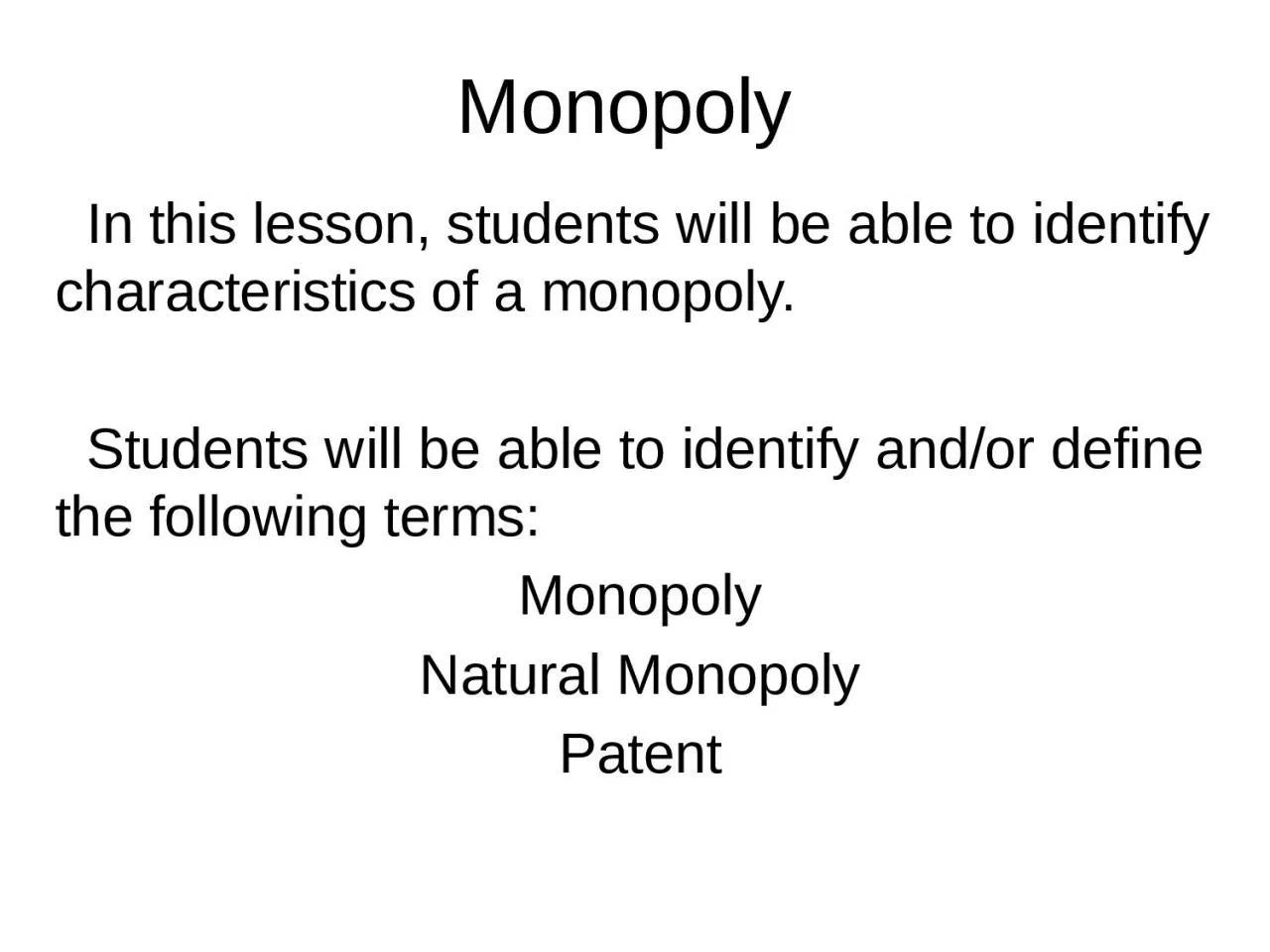

Students will be able to identify andor define the following terms Monopoly Natural Monopoly Patent Do Now What is a barrier to entry Any condition that makes it difficult to enter a market ID: 1028067
Download Presentation The PPT/PDF document "Monopoly In this lesson, students will..." is the property of its rightful owner. Permission is granted to download and print the materials on this web site for personal, non-commercial use only, and to display it on your personal computer provided you do not modify the materials and that you retain all copyright notices contained in the materials. By downloading content from our website, you accept the terms of this agreement.
1. Monopoly In this lesson, students will be able to identify characteristics of a monopoly. Students will be able to identify and/or define the following terms:MonopolyNatural MonopolyPatent
2. Do NowWhat is a barrier to entry?Any condition that makes it difficult to enter a market.
3. MonopolyA monopoly is a market dominated by a single seller.In general, monopolies are illegal.Monopolies lead to higher prices, inferior quality of products, and reduced supply.Monopolies lead to higher prices, decreased supply, and lower quality due to the absence of competition.
4. MonopolyMonopolies lead to higher prices, decreased supply, and lower quality due to the absence of competition.
5. Monopolies can lead to higher prices.Monopolies do not benefit consumers.
6. Antitrust LawsThe government generally prevents monopolies from forming or breaks up existing monopolies.Antitrust laws are laws that prevent the formation and continuation of monopolies.The government recognizes that monopolies do not benefit consumers.
7. The government carefully watches market activity and prevents the formation of most monopolies.
8. Natural MonopoliesHowever, the government does allow the formation of some monopolies.A natural monopoly occurs when a market runs most efficiently with one firm supplying all of the output.An example of a natural monopoly is public water.
9. Rather than building an overlapping network of pipes, one company serves customers best.
10. PatentsA patent also provides a supplier with monopoly power.A patent is a license given to the inventor of a product to be the sole supplier of the product for a number of years.A patent is an incentive for invention.
11. Nextel had a patent for a number of years on one of its phone features.
12. The Market SpectrumPerfect competition is vastly different than a monopoly.In perfect competition, many sellers sell identical products.In a monopoly, a single seller is the sole supplier.
13. The old monopolies have been broken up.
14. The phone company was once a natural monopoly. The government has since deregulated it.
15. Questions for Reflection:Define monopoly.List three problems created by monopolies.Why does the government enforce Antitrust laws?Why is public water a natural monopoly?What happens when a market is deregulated?